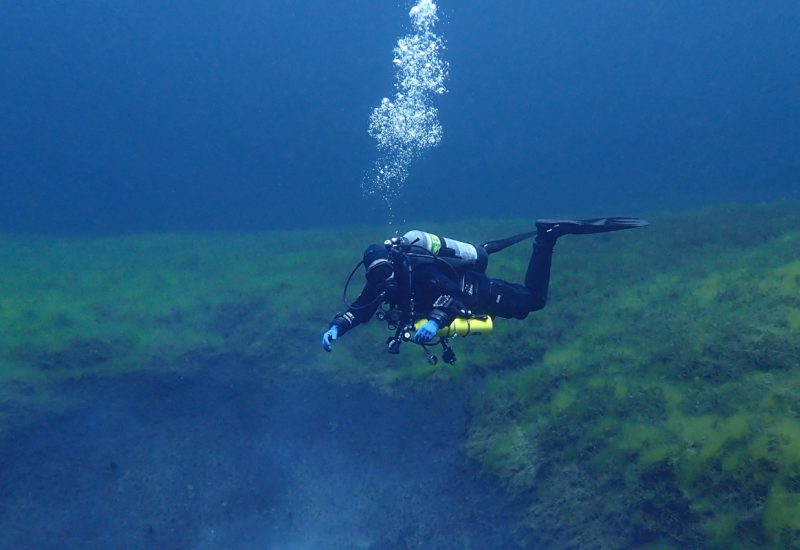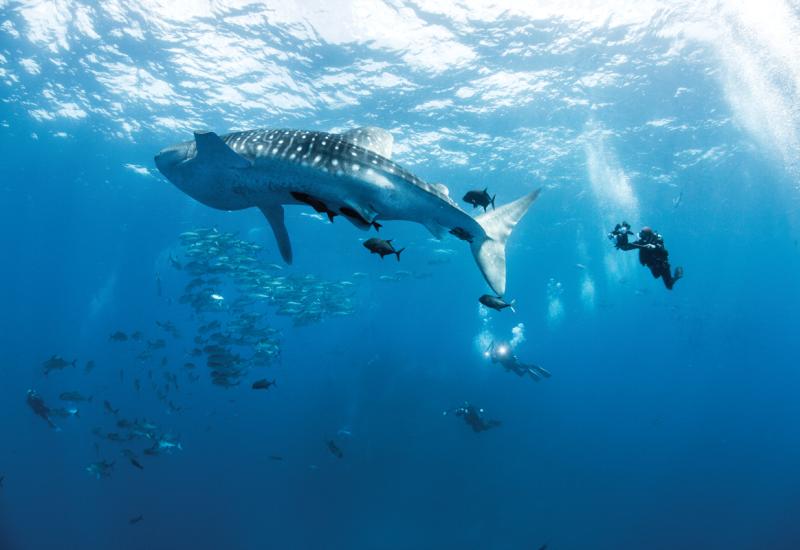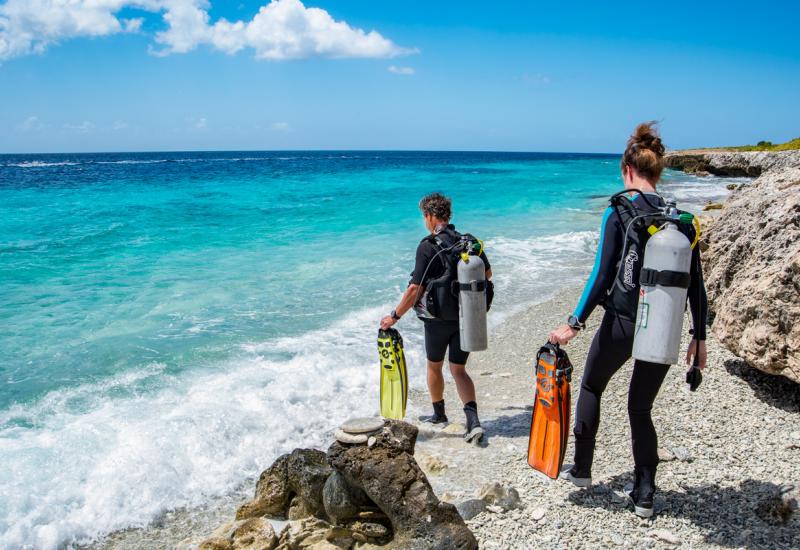Dive Speak: The A to Z of Dive and Gear Lingo — A
ScubaLab director John Brumm has devoted decades to ensuring the quality of the life support equipment he and fellow divers rely on. In Dive Speak he explains scuba gear terms from A to Z. Today, the letter "A."
AAS
Short for alternate air source. This can be virtually any air delivery device other than your primary regulator (octo reg, redundant air system, etc.), but in recreational diving it most often refers to the modern inflator/reg that replaces the standard power inflator on a BC. This AAS does double-duty as a power inflator for your BC and a secondary reg for buddy-breathing situations.
AGE
Age is something you won’t be around to enjoy if you get an Arterial Gas Embolism. This occurs when a diver holds his or her breath while ascending to the surface, allowing air bubbles to enter the bloodstream, thereby blocking blood flow and causing death. Hence scuba’s golden rule: “breathe, breathe, breathe.”
Air
What we all breathe on terra firma and, when compressed, what makes up the traditional fill in scuba cylinders for recreational diving. It is comprised of 78 percent nitrogen, 21 percent oxygen and 1 percent argon.
Air Compressor
The machine that can pack a pile of pressurized air into a scuba cylinder so divers can spend extended periods of time under water. Depending on the cylinder, an air compressor can take topside air, at 14.7 pounds per square inch (psi), and compress it to 2,200 to as much as 3,500 psi (in the U.S.).
Air Consumption Rate
****The rate that a diver consumes air while at depth. Determining your air consumption rate enables you to better preplan dives, from time at depth, to how deep you dive, to how much air you want to keep in reserve for your return to the surface.
Algorithm
A dive computer’s operating program. It’s the mathematical formula that uses real-time measures of depth, gas mix, time at depth and other data to calculate how long you can safely stay beneath the surface while avoiding decompression sickness.
Aluminum 80
The most common — and least expensive — scuba cylinder used in recreational diving, made of aluminum rather than steel. It is so-named because it is designed to hold 80 cubic feet of air. (In actuality, it usually holds a little more than 77 cubic feet.)
Ambient Pressure
****Wherever you happen to be, this is the pressure around you. On land, it’s the pressure of the surrounding air. While diving, it’s the pressure of the surrounding water. As depths increase, so does the ambient pressure.
Annual
The required yearly visual inspection for scuba tanks. It’s a term that’s also used when referring to a yearly regulator checkup.
Ascent Rate
The speed in which a diver ascends to the surface. A safe ascent rate ranges from 30 feet to 60 feet per minute, depending on how deep you are. If in doubt, the old diver’s adage states, never ascend faster than your bubbles.
ScubaLab director John Brumm has devoted decades to ensuring the quality of the life support equipment he and fellow divers rely on. In Dive Speak he explains scuba gear terms from A to Z. Today, the letter "A."
AAS
Short for alternate air source. This can be virtually any air delivery device other than your primary regulator (octo reg, redundant air system, etc.), but in recreational diving it most often refers to the modern inflator/reg that replaces the standard power inflator on a BC. This AAS does double-duty as a power inflator for your BC and a secondary reg for buddy-breathing situations.
AGE
Age is something you won’t be around to enjoy if you get an Arterial Gas Embolism. This occurs when a diver holds his or her breath while ascending to the surface, allowing air bubbles to enter the bloodstream, thereby blocking blood flow and causing death. Hence scuba’s golden rule: “breathe, breathe, breathe.”
Air
What we all breathe on terra firma and, when compressed, what makes up the traditional fill in scuba cylinders for recreational diving. It is comprised of 78 percent nitrogen, 21 percent oxygen and 1 percent argon.
Air Compressor
The machine that can pack a pile of pressurized air into a scuba cylinder so divers can spend extended periods of time under water. Depending on the cylinder, an air compressor can take topside air, at 14.7 pounds per square inch (psi), and compress it to 2,200 to as much as 3,500 psi (in the U.S.).
Air Consumption Rate
****The rate that a diver consumes air while at depth. Determining your air consumption rate enables you to better preplan dives, from time at depth, to how deep you dive, to how much air you want to keep in reserve for your return to the surface.
Algorithm
A dive computer’s operating program. It’s the mathematical formula that uses real-time measures of depth, gas mix, time at depth and other data to calculate how long you can safely stay beneath the surface while avoiding decompression sickness.
Aluminum 80
The most common — and least expensive — scuba cylinder used in recreational diving, made of aluminum rather than steel. It is so-named because it is designed to hold 80 cubic feet of air. (In actuality, it usually holds a little more than 77 cubic feet.)
Ambient Pressure
****Wherever you happen to be, this is the pressure around you. On land, it’s the pressure of the surrounding air. While diving, it’s the pressure of the surrounding water. As depths increase, so does the ambient pressure.
Annual
The required yearly visual inspection for scuba tanks. It’s a term that’s also used when referring to a yearly regulator checkup.
Ascent Rate
The speed in which a diver ascends to the surface. A safe ascent rate ranges from 30 feet to 60 feet per minute, depending on how deep you are. If in doubt, the old diver’s adage states, never ascend faster than your bubbles.










